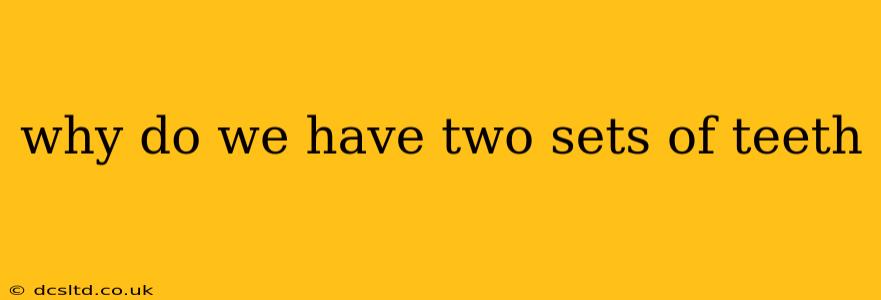Humans, unlike many animals, develop two sets of teeth during their lifetime: a set of deciduous teeth (also known as baby teeth or primary teeth) and a set of permanent teeth (also known as secondary teeth or adult teeth). This unique dental development pattern serves several crucial purposes, impacting our growth, development, and overall health. Understanding this process reveals fascinating insights into human biology.
What are Deciduous Teeth and Why Do We Need Them?
Our first set, the deciduous teeth, typically begins erupting around six months of age and consists of 20 teeth: ten in the upper jaw and ten in the lower jaw. These smaller teeth play a vital role in:
- Nutrition in Early Childhood: These teeth allow infants and toddlers to chew and digest solid foods, transitioning from a purely liquid diet. This is critical for proper growth and development.
- Speech Development: The presence of these teeth contributes significantly to the development of clear speech patterns. The positioning of the tongue and jaw is influenced by the presence and arrangement of teeth.
- Jaw Development: Deciduous teeth act as placeholders, guiding the growth and development of the jawbones. They help to maintain space for the larger permanent teeth that will eventually replace them. The roots of the baby teeth stimulate the growth of the jaw. If a baby tooth is lost prematurely, the adjacent teeth may drift into the open space, potentially compromising the alignment of the permanent teeth.
Why Are Permanent Teeth Necessary?
Permanent teeth, which generally begin erupting around age six, replace the deciduous teeth. This second set comprises 32 teeth, including wisdom teeth, which may or may not erupt. The transition to permanent teeth is essential for several reasons:
- Adult Functionality: Permanent teeth are larger and stronger than deciduous teeth, better equipped to handle the increased chewing demands associated with adult diets. They're designed to withstand the pressures of harder foods and longer chewing times.
- Improved Mastication: The larger size and stronger structure of permanent teeth enhance the efficiency of mastication (chewing), leading to better digestion and nutrient absorption.
- Aesthetic Considerations: Permanent teeth significantly contribute to facial aesthetics and self-confidence. They are generally more aesthetically pleasing and help create a more defined facial structure.
What Happens to Deciduous Teeth?
The deciduous teeth are naturally shed as the permanent teeth push them out. This process is known as exfoliation. The roots of the baby teeth gradually dissolve, making them loose and easily removable. This is a natural and usually painless process.
What if a Baby Tooth is Lost Prematurely?
Premature loss of a deciduous tooth can create problems. The adjacent teeth may shift into the space, potentially hindering the eruption of the permanent tooth. In such cases, a space maintainer (a small appliance placed in the mouth) might be necessary to prevent this from happening. It’s crucial to consult a dentist if a baby tooth is lost before its natural exfoliation time.
Why Don't All Animals Have Two Sets of Teeth?
Many animals have only one set of teeth, while others continuously replace their teeth throughout their lives (polyphyodonty). The development of two sets of teeth in humans is a specific adaptation linked to our prolonged period of childhood development and our complex dietary needs throughout life.
Why Do We Have Wisdom Teeth?
Wisdom teeth, the third molars, are the last permanent teeth to erupt, usually between the ages of 17 and 25. Their function is less clear than that of other teeth; some argue they served a purpose in our ancestors' diets, while others believe they are a vestigial structure, a remnant of our evolutionary past. The need for wisdom teeth varies, and many individuals choose to have them extracted to prevent potential dental problems.
This detailed explanation addresses the fundamental question of why humans have two sets of teeth, exploring the intricacies of deciduous and permanent dentition, while also addressing common related questions about dental health and evolution. Maintaining good oral hygiene throughout life is essential to maximizing the benefits of both sets of teeth.
